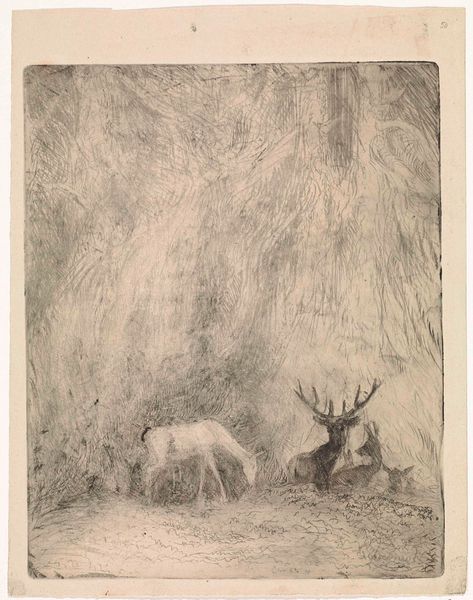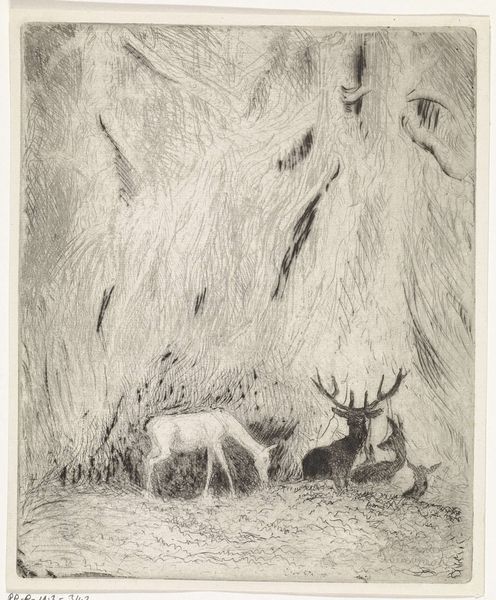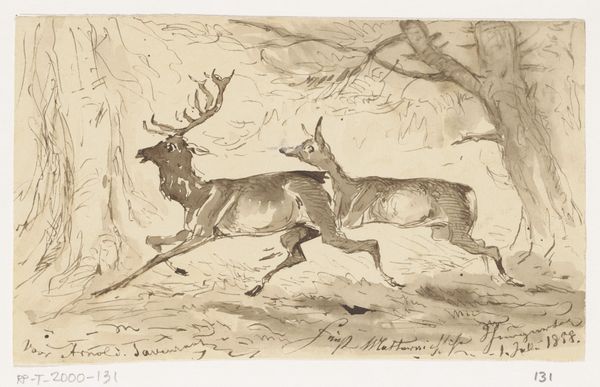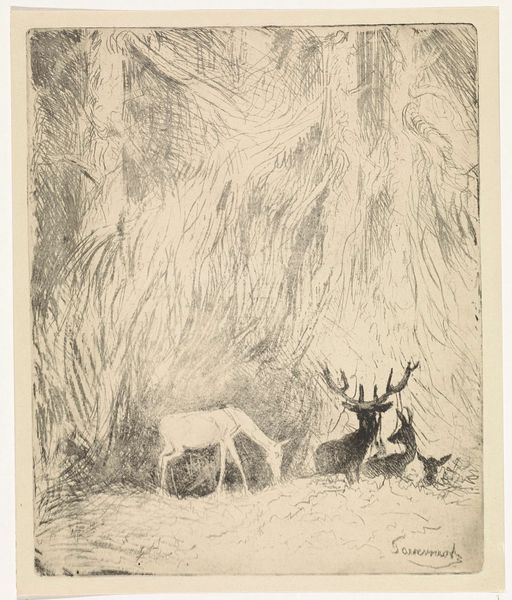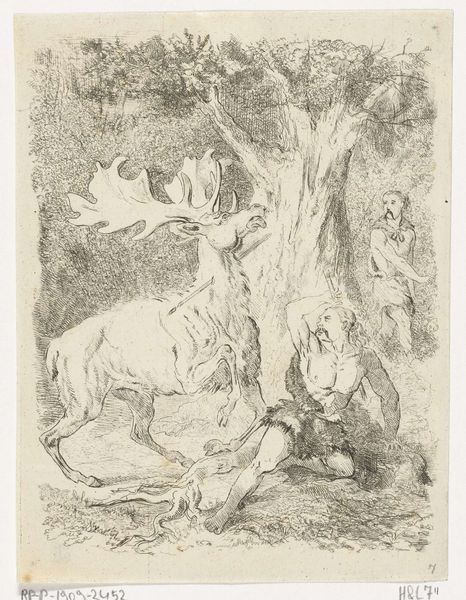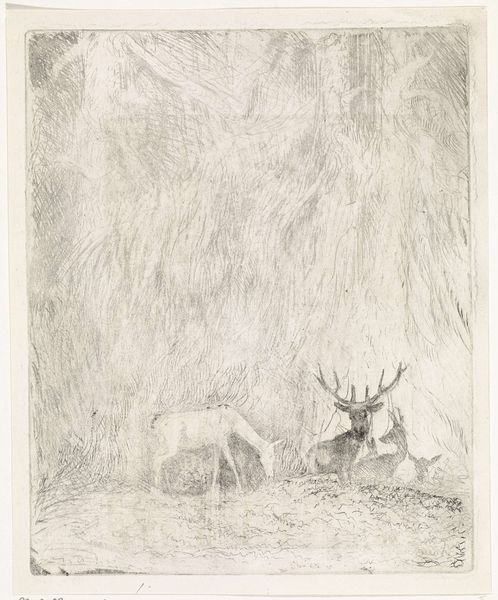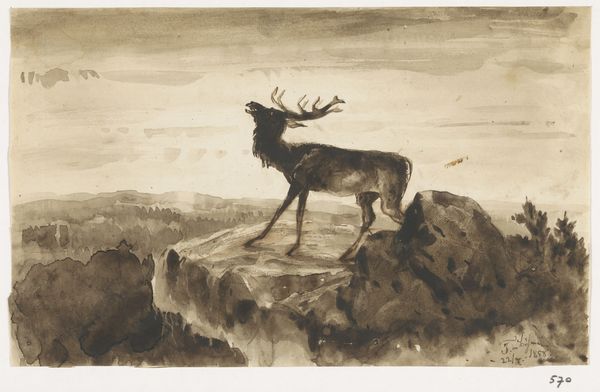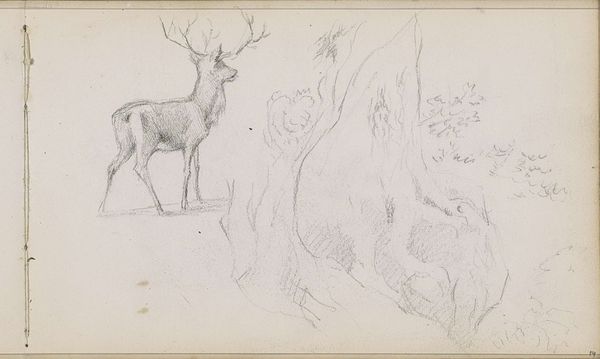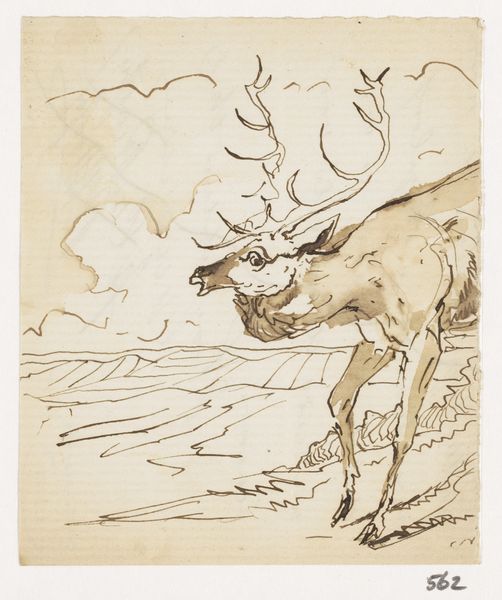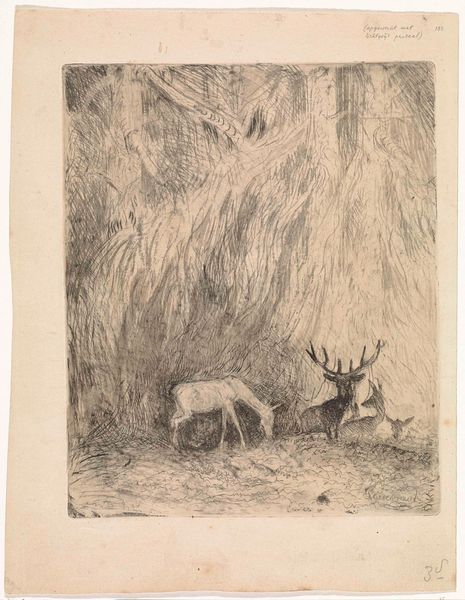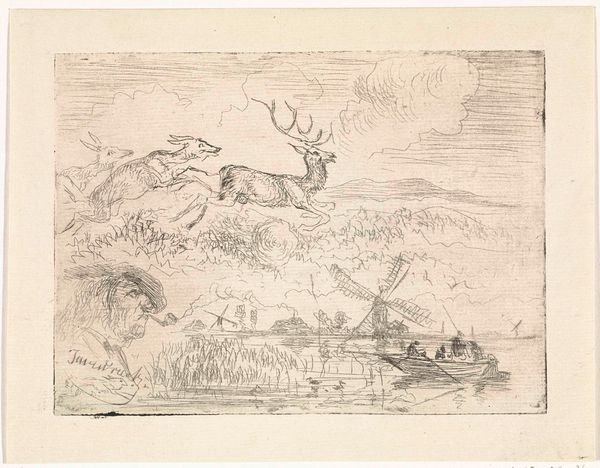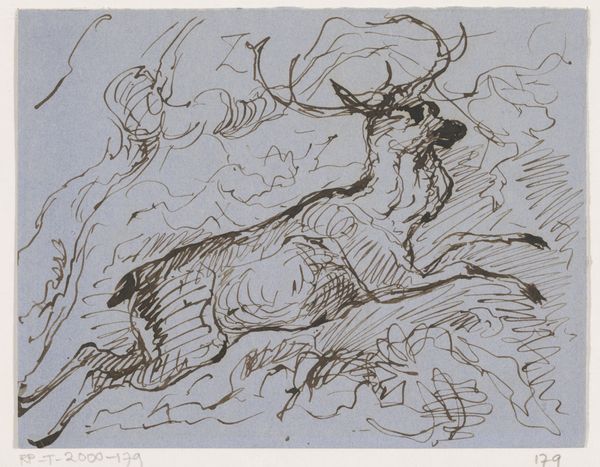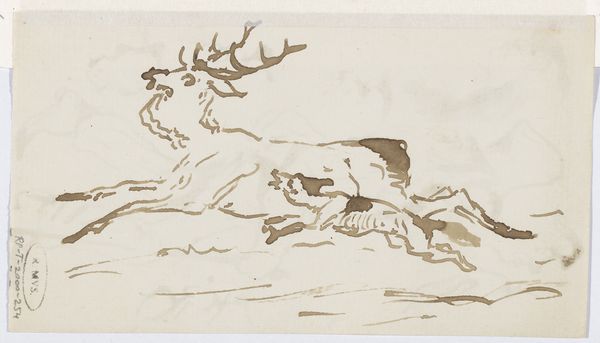
Copyright: Rijks Museum: Open Domain
Editor: Here we have *Landscapes with Deer Chased by Dogs* by Johannes Tavenraat, created in 1858. It's rendered in ink and charcoal, a dynamic landscape. I find the scene a bit unsettling, actually. It really captures a sense of impending danger. What do you make of it? Curator: Well, it’s interesting you say unsettling. Considering the art world at that time, representations of nature, and animals in particular, were frequently loaded with socio-political meaning. Did the depiction of a hunt serve to legitimize the societal hierarchy, placing humans at the apex? Think about it: hunting, often an aristocratic pastime, visually asserted power. Editor: So, it’s less about the beauty of nature and more about power structures? Curator: Exactly. This wasn’t merely an aesthetic pursuit; it was a representation imbued with power dynamics. How do you think the *location* of this artwork influences your view of it? Being in the Rijksmuseum? Editor: Good point. Being displayed here suggests a certain validation. I mean, by putting it in a national museum, aren't we, as a society, endorsing, or at least recognizing, that power structure? Curator: Precisely. The Rijksmuseum’s decision to exhibit it inherently frames how the public engages with this work, doesn't it? A crucial role of museums is both preservation and critical interpretation of the past. We must consider how art like this reinforces or challenges particular narratives, because art reflects much more than simply the skill of an artist, it shows the ideals of an era. Editor: I hadn't really considered all that, but it really changes how I see the piece. It’s not just a drawing of deer; it's a statement about society. Curator: Absolutely! That’s the lens of history!
Comments
No comments
Be the first to comment and join the conversation on the ultimate creative platform.
